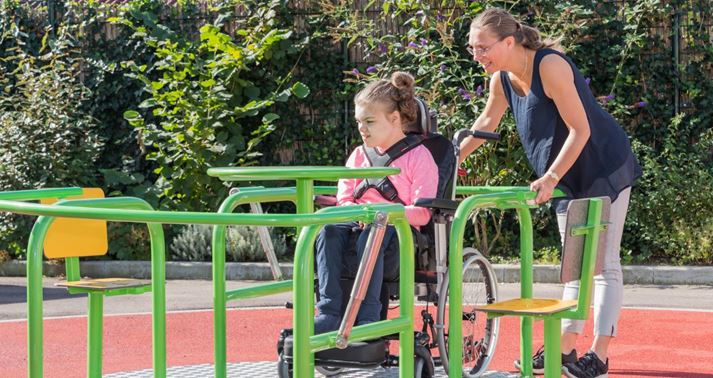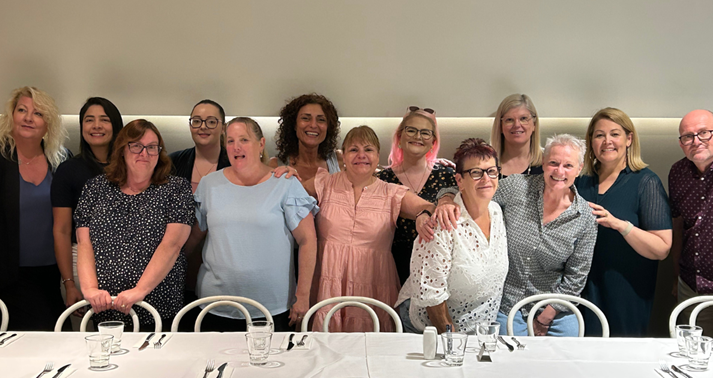NDIS Explained: Answers to the 10 Most Common Questions
09 February, 2022

Understanding the National Disability Insurance Scheme (NDIS) can open the door to greater independence, choice, and opportunity. Whether you’re just getting started or looking to better understand how it all works, it’s completely normal to have questions. At McArthur Community Care, we’ve had the privilege of supporting hundreds of participants and families across Australia - and we’re here to share insights, guidance and reassurance every step of the way.
To help you feel more confident and informed, we’ve answered the 10 most frequently asked NDIS questions – all in one place.
1. What is the NDIS and how does it work?
The NDIS (National Disability Insurance Scheme) is a government-funded program that provides personalised support to Australians with permanent and significant disability. It focuses on helping participants achieve their goals – whether that’s greater independence, more community involvement, education, employment or better wellbeing.
The scheme works by providing funding directly to participants, which they can use to access services and supports that meet their individual needs.
2. Who is eligible for the NDIS?
To access the NDIS, you must:
- Be under 65 years of age when you apply
- Be an Australian citizen, permanent resident or hold a Protected Special Category Visa
- Have a permanent and significant disability that impacts your daily life
You can check your eligibility through the NDIS Access Checklist on the official website.
3. What types of supports does the NDIS fund?
The NDIS funds a wide range of reasonable and necessary supports, including:
- Daily personal activities (e.g. showering, dressing)
- Transport to enable participation in the community
- Therapeutic supports (e.g. speech therapy, occupational therapy)
- Home modifications and mobility equipment
- Support coordination and plan management
The type of support you receive depends on your goals and assessed needs.
4. How do I apply for the NDIS?
Applying for the NDIS involves a few key steps, and getting the right support and documentation upfront can make the process smoother. Here’s how to get started:
Step 1: Check your eligibility
Visit the NDIS website eligibility checklist to see if you meet the basic criteria (age, residency, and disability requirements).
Step 2: Request an Access Request Form (ARF)
You can request an Access Request Form by:
- Calling the NDIS on 1800 800 110
- Visiting your nearest NDIS or Local Area Coordinator (LAC) office
- Asking your GP or health professional to assist with the form
If you’re already working with a Support Coordinator or Early Childhood Partner, they can help too.
Step 3: Gather your supporting evidence
This is one of the most important steps. You’ll need to include evidence of your disability, which must show:
- The type of disability you have
- That it is permanent or likely to be permanent
- How it impacts your everyday life and functional capacity
Evidence can include:
- Reports or letters from your GP or specialist
- Allied health assessments (e.g. OT, physio, speech reports)
- Psychosocial assessments (if relevant)
- Functional assessments (how your disability impacts daily living)
Try to ensure your documents are recent (within the last 12 months) and clearly describe how your disability affects different areas of your life.
Step 4: Complete and submit the Access Request Form
Once your form and supporting documents are ready, you can submit them via:
- Email: [email protected]
- Post: GPO Box 700, Canberra ACT 2601
- In person: At your local NDIA, LAC, or partner office
Step 5: Await the decision
After your application is submitted, the NDIS will review your information and may contact you or your health professionals for clarification. You’ll receive a decision in writing, usually within 21 days.
If your application is approved, the next step is your planning meeting, where you’ll talk through your goals and what supports you need.
It can be incredibly helpful to involve someone who knows the NDIS well – like a Support Coordinator, Local Area Coordinator (LAC), or Early Childhood Partner – to guide you through the application and ensure your supporting evidence is strong.
5. What is an NDIS plan?
An NDIS plan is a personalised document that outlines your goals, the types of supports you need, and the funding the NDIS has approved for you. It’s created after your planning meeting and is tailored to help you work towards your goals, build your independence, and participate more fully in your community.
Your NDIS plan will include:
- Your personal details
- Your goals – both short and long-term
- Informal supports – like help from family, friends or community
- Funded supports – divided into three main categories:
- Core Supports: Help with everyday activities like personal care, transport, or community access
- Capacity Building Supports: Services that build your skills and independence (e.g. therapy, training, support coordination)
- Capital Supports: One-off purchases such as assistive technology or home modifications
The plan is usually active for 12 months and reviewed annually, but it can be adjusted if your needs change. You’ll also be able to choose how you want to manage your funding through the NDIA, a plan manager, or self-management.
Your NDIS plan is your roadmap to greater choice and control and it should reflect what matters most to you.
6. Can I choose my own providers?
Yes! The NDIS is all about choice and control. You can choose who provides your supports, when they provide them, and how. You can even switch providers if your needs change.
You can search for registered providers on the NDIS Provider Finder.
7. What is the difference between a registered and unregistered provider?
Registered providers have been approved by the NDIS Quality and Safeguards Commission and must meet strict standards. Unregistered providers may still offer high-quality services but aren’t formally registered with the NDIS.
Participants who self-manage or have a plan manager can access both registered and unregistered providers.
8. What if I’m unhappy with my plan or need changes?
NDIS plans are reviewed regularly, usually every 12 months, but you can request a plan reassessment at any time if your circumstances change.
If you’re unhappy with a decision, you have the right to request an internal review or contact the Administrative Appeals Tribunal (AAT) for external review.
9. How can I manage my plan?
You have three options:
- NDIA-managed: The NDIS pays your providers directly.
- Plan-managed: A plan manager helps with budgeting and pays invoices on your behalf.
- Self-managed: You manage the funding, payments and record-keeping yourself.
You can also mix and match these depending on what suits you best.
10 Where can I get help navigating the NDIS?
There’s plenty of support out there:
- Local Area Coordinators (LACs) help you understand and use your plan
- Support Coordinators assist with connecting to services and building your independence
- Advocacy organisations can help you have your voice heard
At McArthur Community Care, we work closely with individuals and families across Australia to simplify the process and provide trusted, compassionate support every step of the way.
We’re Here to Help You Navigate the NDIS with Confidence
The NDIS is a powerful tool designed to put you in control of your life and your future. While it can feel complex at first, understanding how it works is the first step toward unlocking the support, independence and opportunities you deserve.
We hope this guide has helped you feel more informed, more confident, and ready to make the most of what’s possible.
If you or your loved one are ready to take the next step, McArthur Community Care is here to stand beside you with tailored guidance, compassionate support, and a deep understanding of the NDIS.
Reach out today and let’s take that next step forward together.
Share this Article
Related Articles
McArthur Community Care Awarded ACIS Certification and Recommended for Best Practice.
The McArthur Community Care team could not be prouder of our recent ACIS Certification and recommendation for Best Practice.
Changing NDIS Providers: How to Navigate Service Closures with Confidence
If your NDIS provider is closing services, your support does not have to stop. Discover your rights, how to switch providers with confidence, and how McArthur Community Care can ensure a smooth transition with reliable, long term support.
Learn MoreMcArthur Community Care SA Recognised for Best Practice
McArthur Community Care SA has achieved a Best Practice Rating following a recent NDIS surveillance audit, an honour awarded to only a select few providers nationwide. This milestone reflects our commitment to quality, governance, and person-centred disability support.
Learn MoreCreating a Compassionate Future for Disability Support
Empowering individuals with disability starts with equipping support workers with the right skills. McArthur Community Care advocates for quality training, respect, and inclusion to create a compassionate future for disability support.
Learn More



